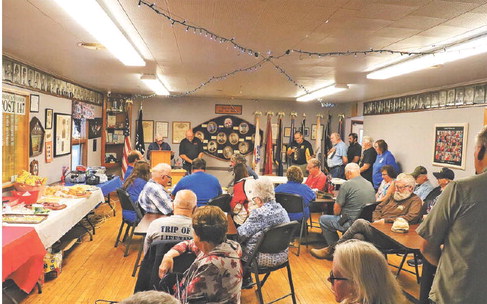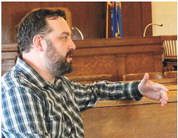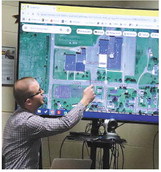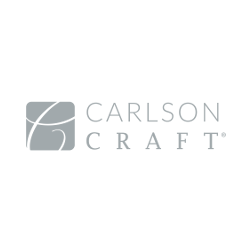Nov. 8 Loyal referendum will ask for more than $1 million annually for five years
The Loyal Board of Education last week approved placing an operational referendum on the Nov. 8 election ballot that will ask residents for more than $1 million in additional property taxes for each of the next five years. If approved, the referendum would allow the school district to collect as much as $6.7 million in additional local property taxes by 2028 than state revenue cap laws would otherwise allow.
The Board at an Aug. 24 meeting approved a referendum question that will ask for $1.1 million in additional taxes for the 2023-24 year, and then $1.4 million in each of the next four years. The referendum would then sunset after 2028. If approved, this referendum would replace the existing $675,000 one that was passed by voters four years ago.
If the referendum passes, the local property tax rate would increase slightly in the first two years, but then fall. Under the current $675,000 revenue cap exemption, the district’s tax rate is $6.77 per $1,000 of equalized value this year, and is expected to drop to $6.53 next year. With the new referendum, the rate would climb to $8.01 in 2023-24 and $8.21 the following year, but then drop back to $7.28 in 2025-26 and then $6.82 the year after that.
This referendum is for different purposes than the $11.7 million question that was turned down by Loyal voters in April. That question asked for money for facility renovation and expansion, while the Nov. 8 question seeks funds to allow the district to continue normal operations without cuts to staffing or programs. The state revenue cap formula does not allow small rural districts to collect enough in local taxes to fund desired operations, so they must ask voters for approval to raise taxes.
Loyal District Administrator Chris Lindner said the Board worked with a financial advisor to determine how much in additional taxes will be needed to balance future budgets. “What could we survive with?” is the question the discussion was based upon, he said.
After studying various scenarios ranging from annual tax hikes of $900,000 to as much as $1.9 million, Lindner said the Board settled on $1.1 million for the first year and $1.4 million after that.
“This is what we feel we’re comfortable with going forward so we can last the five years,” Lindner said.
The amount of the referendum is based somewhat on unclear budget numbers. One factor that is unknown is potential action by the state Legislature. In its next biennial budget, it may or may not include a per pupil increase in state aid that could lessen the district’s tax needs. Lindner said the district is assuming there will be no increase, but if there is, the district can adjust.
“If we’re sitting better than we thought, we don’t have to tax to the full $1.1 or $1.4 million,” he said.
Board President Tom Odeen said the district will not need the full $1.1 million in the first year, but wants to take advantage of the funding formula to get money for facility needs.
“With school funding, it’s based on what you spend,” Odeen said. “Because we’re spending that money for building improvements, we get state aids on that the following year.”
Lindner said the Board postponed some facility projects to wait for the results of the April building referendum.
“There is a number of things we’re looking at that we could use that for,” he said.
Included on the potential upgrade list are paving of the elementary parking area, paving of the west-side parking lot and circle drive, and repair of the roof over the 1997 portion of the building.
Odeen said the Board could possibly use as much as $850,000 of the first year’s $1.1 million referendum for facility improvements. After that, the extra tax money would go into annual district operations such as staff wages, transportation, utilities, etc. By the fifth year of the referendum, Odeen said the $1.4 million might not be enough to balance the annual budget, but the Board should be able to get by with available funds.
“We do have a healthy fund balance now,” he said. Odeen also noted that district property values -- one of the main components in computing how much property owners contribute to the school -- are up significantly this year, mostly because values have been reassessed in several municipalities. That gives the district more value over which to spread the total tax burden, which decreases the tax rate.
“That’s actually helping us because properties are valued higher,” he said.
The Board did not choose to go with what is called a recurring referendum, or one that continues forever once approved. Odeen said the Board would prefer to come to taxpayers every few years instead of asking for a permanent tax increase.
“It’s allowed us to change those numbers as needed,” he said.






